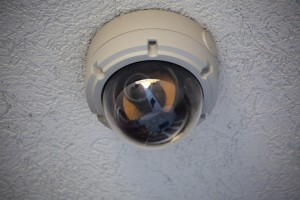
When used properly, school security cameras can help administrators monitor how well staff are supervising students
Using School Security Cameras Properly
School security cameras can be a valuable tool to enhance school security. School security cameras can also provide valuable evidence in litigation against school officials. The way school security cameras are utilized often determines which of these outcomes will occur. There are approaches to school security camera utilization that can help school officials obtain the benefits of school security cameras while reducing the chances that security cameras will end up being a nail in the coffin of their legal defense should a school security incident
1. Don’t ask more from school security cameras than is realistic
School security camera approaches can significantly improve school safety. However, my experience has been that security cameras do not provide the level of deterrent effect that many people assume they provide. Multiple research projects have demonstrated that security cameras have a very limited impact on crime rates. Certain types of violators such as people who plan to come to a school to shoot one or more victims are typically not deterred by the fact that their actions will be recorded by school security cameras. But school security cameras can help reduce incidents as an investigative tool when offenders know they will face consequences if caught. At the same time, having video evidence that a student was attacked in a school is not much use if the aggressor(s) are not held accountable to a reasonable extent. This is destined to become an increasingly difficult problem in school safety litigation as schools face increasing pressure not to prosecute students for crimes on campus. Consequences are a more powerful deterrent than the idea of being caught on camera. Lack of consequences can be compelling evidence against school officials during litigation.
2. Install school security cameras based on a school hazard and vulnerability assessment process
Successful school security camera installations are typically based on a solid hazard and vulnerability assessment process. This type of process can encompass a physical evaluation of the campus, review of incident data and surveys of students and school staff. One very promising approach is to utilize GIS mapping surveys filled out by students to determine areas where improvements in student supervision and security camera coverage are needed.
3. Use cameras to evaluate student supervision rather than to supervise students
While people often think in terms of security cameras as a tool to improve student supervision, they are typically more beneficial as a means for building administrators to verify that staff are properly supervising students. Administrators should periodically walk the campus to verify that staff are effectively supervising students. A building administrator can supplement this by periodically checking to see if staff are properly deployed with a robust school security camera system.
4. Develop and document appropriate student supervision
School security systems often work best when they are used to supplement rather than replace human supervision. Surprisingly, most school employees are not provided with formal staff development in specific techniques for student supervision. Taking the time to train personnel on the simple yet powerful concepts used to supervise students can dramatically improve student safety.
5. Maintain appropriate control of recorded images
Some school organizations have experienced significant problems when images from school security cameras have become widely disseminated via the internet and television news programs. We are also now increasingly seeing situations where students are hacking into school security camera systems to capture live video feed.
6. Properly notify building occupants regarding school security camera use
Careful wording in student handbooks and on posted signage can increase deterrent effect, reassure students, parents and staff while also reducing liability exposure. Verbiage should avoid references to cameras being monitored even if they are. This can often become an issue if an incident is not noticed in real time.
These six simple steps can help improve the many benefits from school security cameras. They can also help avert the all to0 common and often easily preventable situations where school security cameras provide compelling evidence in school security litigation.